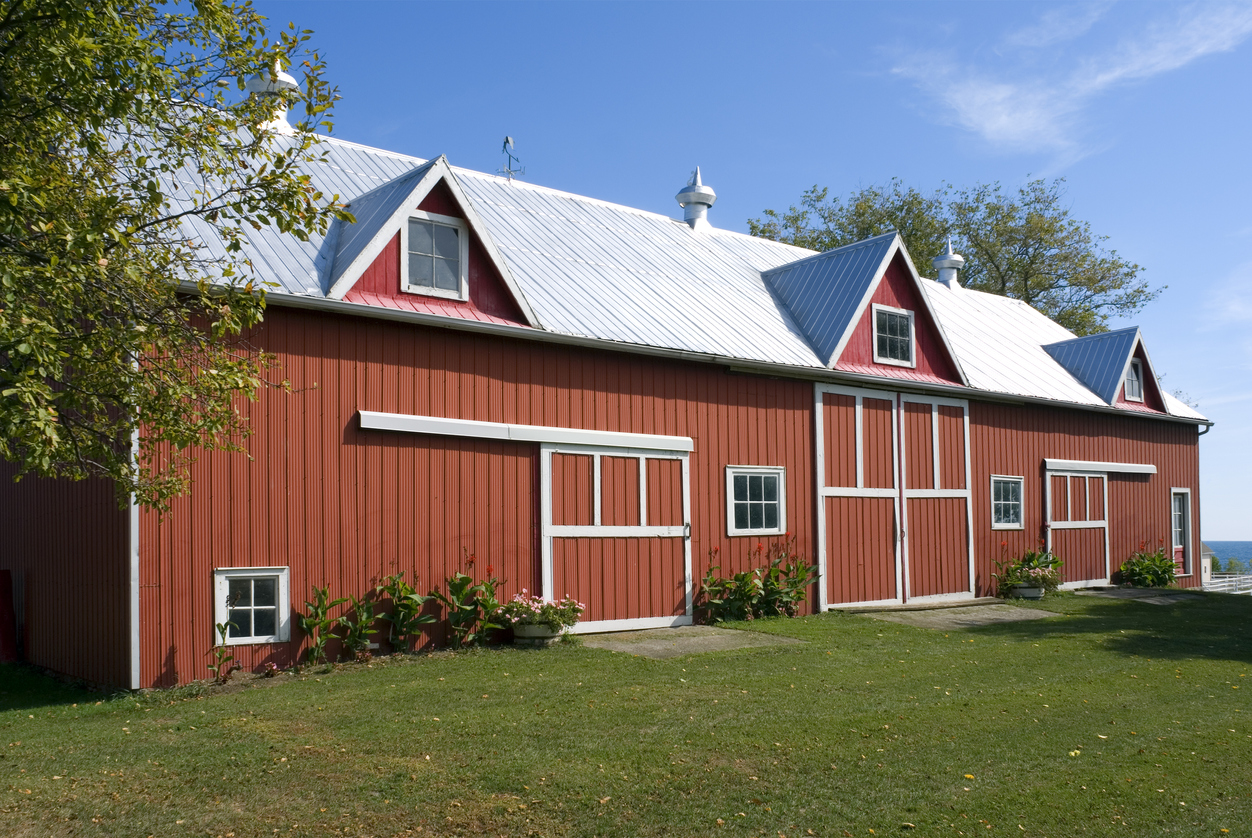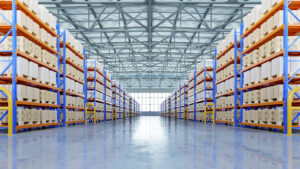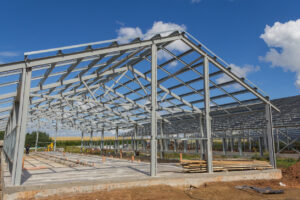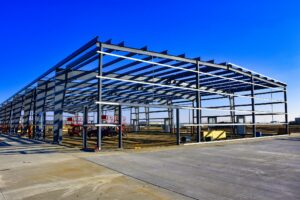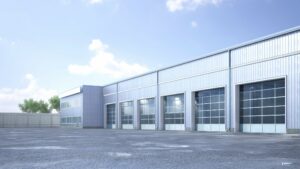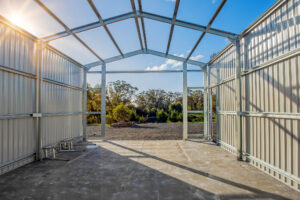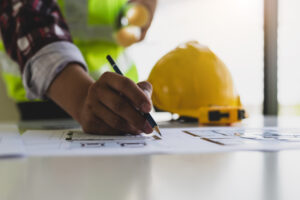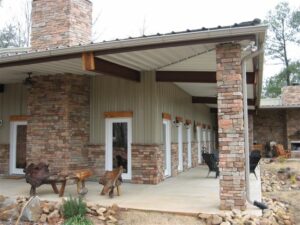An industrial building is a large structure that is specifically designed and constructed for industrial activities, featuring robust construction, high ceilings, and often large floor plates to accommodate heavy machinery and equipment. Industrial buildings are intended to provide a suitable environment for various types of manufacturing, processing, storage, and distribution operations.
These buildings are a crucial component of the infrastructure necessary for economic development and play a vital role in supporting industries across different sectors.
Table of Contents:
- Understanding the Basics of Industrial Buildings
- Key Features of Industrial Buildings
- The Role of Industrial Buildings in the Economy
- Regulations and Standards for Industrial Buildings
- Future Trends in Industrial Building Design
- Conclusion
- Frequently Asked Questions
Understanding the Basics of Industrial Buildings
Definition and Purpose
Industrial buildings are purpose-built facilities that serve as dedicated spaces for industrial activities. They are designed to meet the specific requirements of industrial operations, providing ample space and necessary infrastructure. These buildings are typically characterized by large open floor plans, high ceilings, and strong structural components to accommodate heavy machinery and equipment.
These buildings play a crucial role in supporting various sectors of the economy, such as manufacturing, logistics, and production. They are essential for housing equipment, storing raw materials, and facilitating the production process. These structures are meticulously planned to ensure efficiency, safety, and functionality in the industrial setting.
Did You Know?
The construction industry accounts for approximately 4.3% of the U.S. GDP. Commercial buildings, including industrial buildings, have increased in size, with an estimated 5.9 million commercial buildings in the U.S. containing a total of 97 billion square feet as of 2018.
Different Types of Industrial Buildings
There are a wide range of industrial building types, depending on the specific industry and its unique needs. Some common types include:
- Manufacturing plants
- Warehouses
- Distribution centers
- Storage facilities
- Processing plants
- Industrial parks
Each type serves a distinct purpose and is designed to cater to the specific requirements of the industry it supports.
Manufacturing plants are specialized industrial buildings types where raw materials are transformed into finished products through a series of production processes. These facilities are equipped with machinery, assembly lines, and quality-control systems to streamline manufacturing operations and ensure product quality.
Check out: Exploring Different Warehouse Types
Key Features of Industrial Buildings
Structural Design and Layout
The structural design and layout of industrial buildings, including their key features, are integral to their functionality and efficiency.
These buildings are engineered to withstand heavy loads, provide adequate space for machinery and equipment, and ensure smooth workflow. The layout of industrial buildings is carefully planned to optimize productivity, facilitate material flow, and promote worker safety.
These buildings often incorporate advanced technologies such as automation systems, robotics, and the Internet of Things (IoT) devices to streamline operations and enhance overall efficiency.
The integration of these technologies into the structural design and layout allows for real-time monitoring of processes, predictive maintenance, and data-driven decision-making.
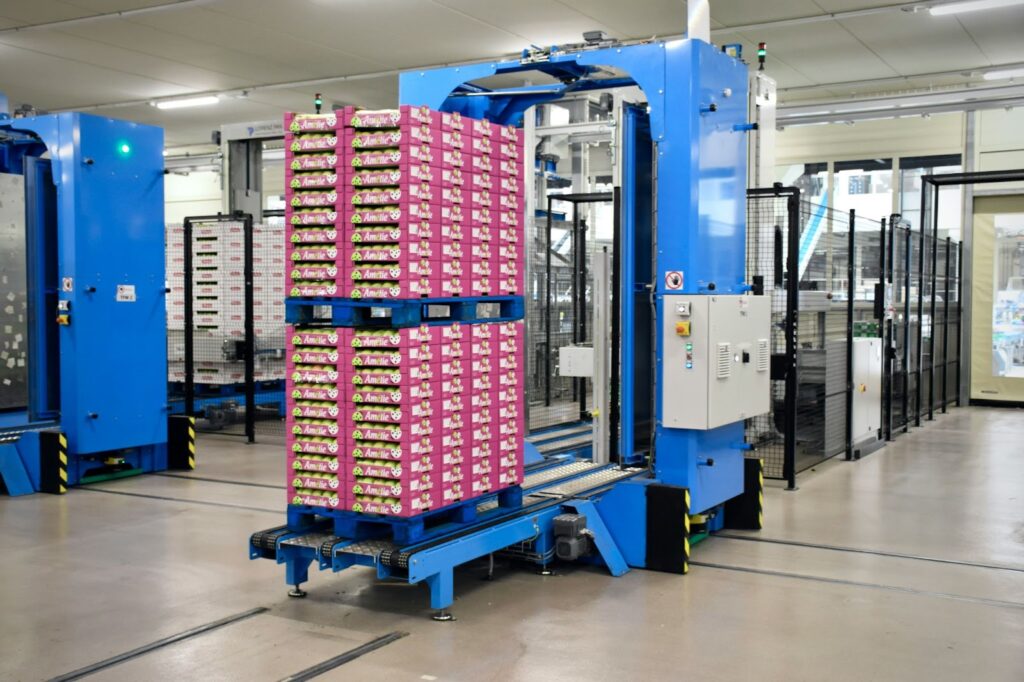
Materials Commonly Used in Industrial Buildings
These buildings are constructed using durable materials that can withstand the demands of industrial operations and provide long-lasting performance. Common materials used in the construction include:
- Steel: Known for its strength and flexibility, steel is a popular choice for the structural framework.
- Concrete: Used for foundations, flooring, and walls, concrete offers durability and resistance to fire and harsh environmental conditions.
- Composite Panels: These panels, consisting of different materials such as steel, insulation, and cladding, provide insulation, weatherproofing, and aesthetic appeal.
The selection of materials is based on factors such as cost, durability, maintenance requirements, and specific industry needs.
In addition to the materials mentioned, these buildings may also incorporate sustainable elements such as green roofs, solar panels, and energy-efficient HVAC systems.
These eco-friendly features not only reduce the environmental impact of the building but also contribute to cost savings and regulatory compliance.
Check out: Cooling Solutions For Metal Buildings
The Role of Industrial Buildings in the Economy
Importance of Industrial Buildings in Manufacturing
These buildings are essential for manufacturing industries as they provide dedicated spaces for production processes. These buildings house the machinery, equipment, and workforce necessary for manufacturing goods on a large scale.
Manufacturing operations conducted within industrial buildings, facilitated by their specialized features, contribute significantly to the economy by producing goods, creating jobs, and driving economic growth.
Moreover, they are designed to meet specific industry requirements, such as high ceilings for large equipment, reinforced flooring for heavy machinery, and ample space for storage and logistics.
The layout and infrastructure of these buildings are carefully planned to optimize production efficiency and ensure worker safety. Additionally, these buildings often incorporate advanced technologies and sustainable practices to enhance productivity while minimizing environmental impact.
Impact on Job Creation and Local Economies
Industrial buildings play a crucial role in job creation and the growth of local economies. The establishment of industrial facilities in an area stimulates employment opportunities, attracting a skilled workforce and boosting the overall economy. They provide a foundation for various industries, fostering economic competitiveness and attracting investment.
Furthermore, the presence of industrial facilities can lead to the development of industrial parks or zones, creating clusters of related businesses that benefit from shared resources and infrastructure.
This clustering effect promotes collaboration and innovation among companies, driving economic development and attracting global markets. Industrial facilities thus serve as key drivers of economic prosperity, shaping the landscape of manufacturing industries and contributing to sustainable growth.
Regulations and Standards for Industrial Buildings
Safety and Health Regulations
These buildings must adhere to stringent safety and health regulations to ensure the well-being of workers and minimize the risk of accidents. These regulations govern aspects such as fire safety, ventilation, hazard control, and emergency response procedures.
Compliance with safety and health regulations is critical to maintaining a safe working environment within industrial facilities.
Ensuring the safety and health of workers in these buildings goes beyond just meeting regulatory requirements. It involves conducting regular safety audits, providing comprehensive safety training to employees, and implementing proactive safety measures.
Industrial facilities often have designated safety officers who oversee compliance with regulations and promote a culture of safety among workers. By prioritizing safety and health, each type of industrial building can create a secure environment tailored to its specific needs, where employees can focus on their tasks without worrying about potential hazards.
Pro tip:
Make sure to prioritize culture over compliance. Rules and regulations are essential for a safe worksite, but a strong safety culture enables every worker to act as a safety leader. When everyone feels accountable for their own well-being and that of their colleagues, accidents are less likely to happen.
Environmental and Energy-Efficiency Standards
With growing concerns about environmental sustainability, industrial buildings are increasingly designed to meet energy efficiency and environmental standards. These standards focus on reducing energy consumption, minimizing waste generation, and incorporating sustainable practices.
By adopting green building strategies, industrial buildings can mitigate their environmental impact and contribute to a more sustainable future.
Implementing environmental and energy efficiency standards in industrial buildings involves utilizing renewable energy sources, optimizing building insulation, and integrating smart technologies for energy management.
These initiatives not only reduce the carbon footprint of industrial facilities but also result in long-term cost savings through lower energy bills. Moreover, by investing in sustainable practices, industrial buildings can enhance their features and reputation as environmentally responsible entities, attracting eco-conscious clients and investors.
Future Trends in Industrial Building Design
Technological Innovations and Their Influence
The rapid advancements in technology have a significant impact on industrial building design and features. Automation, robotics, and digitalization are transforming industrial operations, leading to changes in building layouts and infrastructure requirements.
Industrial buildings of the future are likely to incorporate flexible designs, intelligent systems, and interconnected technologies to optimize productivity and adapt to evolving industry needs.
One of the key technological innovations that will shape the future of building design is the IoT. With IoT, industrial buildings will become smarter and more efficient. Sensors embedded in various parts of the building will collect real-time data, allowing for predictive maintenance and energy optimization.
For example, smart lighting systems will automatically adjust brightness based on occupancy, reducing energy consumption and improving worker comfort.
Sustainable and Green Industrial Buildings
As awareness of environmental issues grows, the demand for sustainable and green industrial buildings is increasing. In the future these buildings will prioritize energy efficiency, renewable energy sources, and eco-friendly materials.
Integration of green technologies, such as solar panels and rainwater harvesting systems, will enhance resource efficiency and reduce environmental impact.
In addition to energy efficiency, sustainable industrial buildings will also focus on improving indoor air quality and promoting employee well-being. Advanced ventilation systems will ensure proper airflow, reducing the risk of airborne pollutants and enhancing worker health.
Incorporating green spaces within industrial complexes will provide employees with areas for relaxation and rejuvenation, contributing to a healthier work environment.
Pro tip:
Constructing your building with energy-efficient materials and designs could make you eligible for tax savings. Energy-efficient features such as maximizing natural light, adding extra insulation, improving ventilation, and using efficient heating and air conditioning systems may all contribute to potential tax benefits.
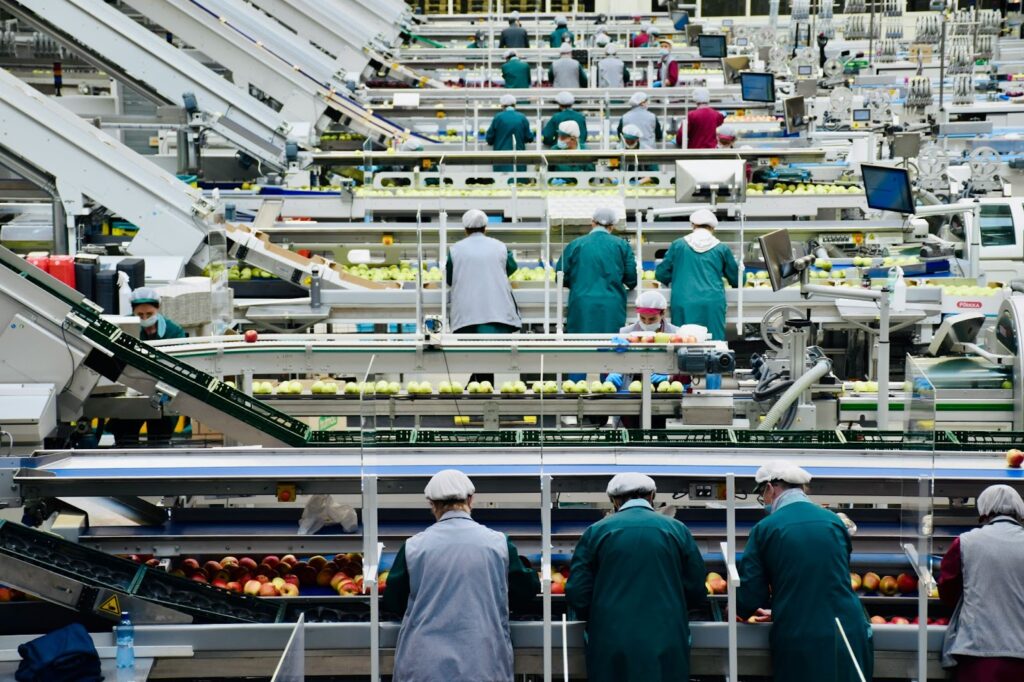
Conclusion
Industrial buildings are essential components of the economic landscape, providing dedicated spaces for manufacturing, storage, and distribution activities.
From their structural design and layout to compliance with safety and environmental regulations, these buildings play a crucial role in supporting industries and stimulating economic growth.
As technology and sustainability continue to shape the industrial sector, the future holds exciting possibilities for the design and functionality of these buildings.
SteelCo has over 23 years of experience dropshipping pre-engineered metal building (PEMB) materials nationwide and offers commercial construction services in Georgia. Learn more about our expertise in PEMB industrial buildings and how we can serve you on your next project.
———————————-
Frequently Asked Questions
What are the current trends in industrial building construction?
Current trends include a focus on sustainability, efficiency, and technology integration. This involves green building practices, modular construction, smart building technologies, robotics and automation, and a greater emphasis on safety and health.
Additionally, there’s a move towards flexible and adaptive design to meet evolving needs.
How does zoning affect industrial building construction?
Zoning laws significantly impact construction by dictating where these facilities can be located and influencing their design and operational requirements. Consulting with a zoning attorney or professional familiar with local regulations can help you navigate zoning guidelines effectively.
What is the lifespan of an industrial building?
The lifespan of an industrial steel building can vary significantly depending on factors such as the quality of construction, the materials used, maintenance practices, and environmental conditions. On average, these buildings can last between 30 and 50 years. However, it can last 50 to 100 years or more.
How long does it typically take to construct an industrial building?
The construction timeline for an industrial steel building is influenced by several factors, including the size, complexity, and location of the project. Steel buildings can typically be constructed more quickly than traditional buildings, with some projects being completed in just a few weeks.
What is the cost of building an industrial facility with steel?
The cost depends on several factors, such as its size, design complexity, and customization. A rough estimate for a basic building is approximately $17 to $20 per square foot for PEMB materials, $6 to $10 for building erection, and around $110 to $150 per square foot for total construction costs (materials and construction).
It’s important to note that this estimate can vary significantly depending on supply and demand dynamics, as well as other market factors.
Are steel industrial buildings environmentally friendly?
Yes. Steel is a recyclable material, and using pre-engineered components can reduce waste. Additionally, steel buildings can be designed with energy-efficient systems, insulation, and renewable energy sources to minimize their environmental footprint.
—————————–
Check out these related articles:
> What Is A Manufacturing Building?
> Why Steel Industrial Buildings Popularity Continues To Grow
> The Future Of Industrial Steel Buildings: Prefabrication, Metal Buildings, And More









